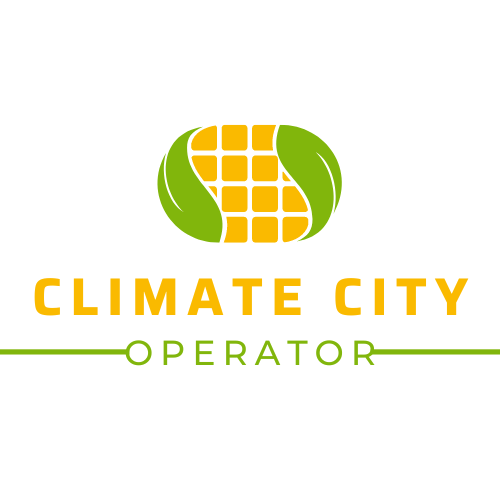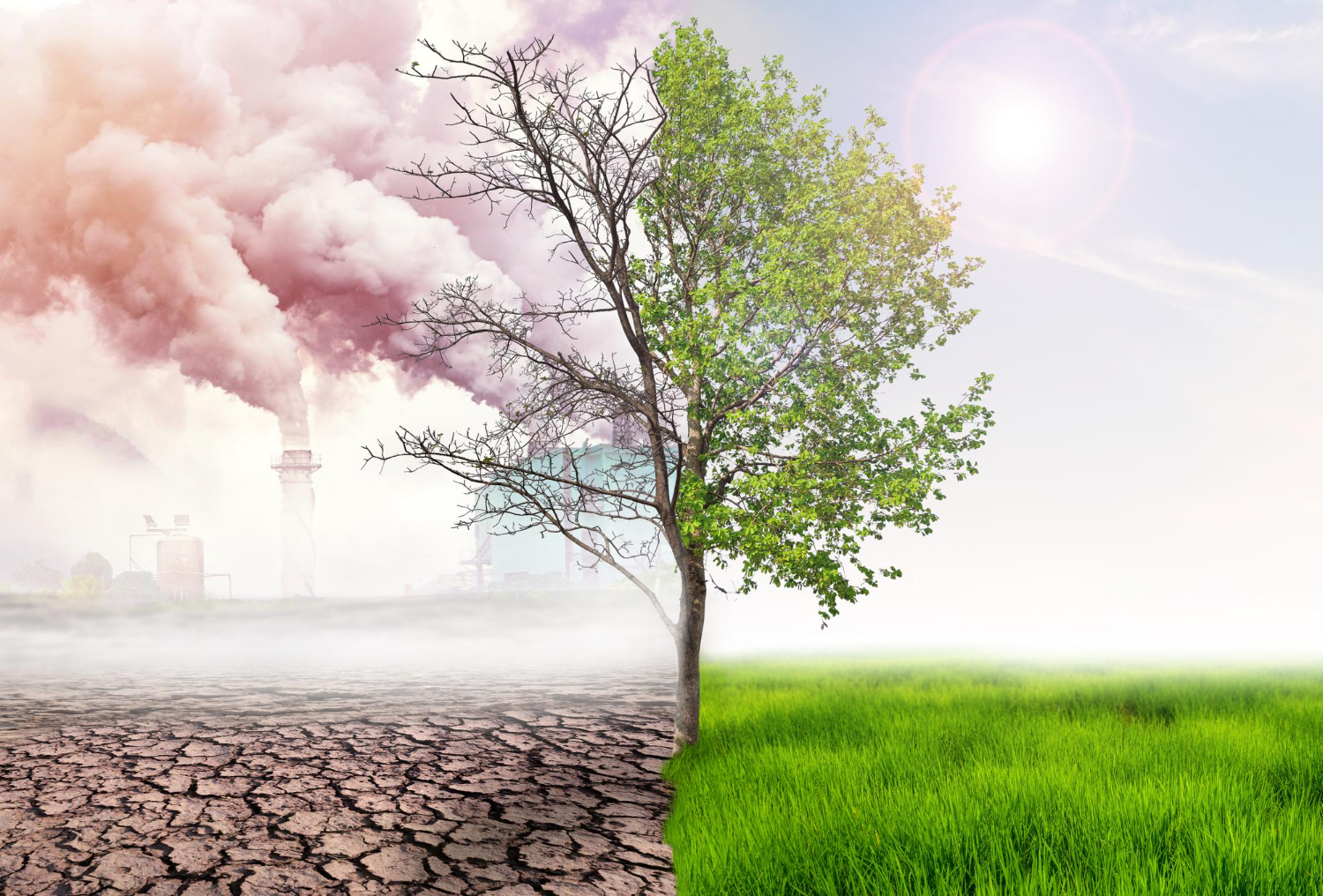ฟิลเลอร์ใต้ตา เป็นวิธีการแก้ไขปัญหาใต้ตาที่ได้รับความนิยม โดยใช้สารเติมเต็ม (Filler) ฉีดเข้าสู่บริเวณใต้ตาเพื่อแก้ไขปัญหาต่างๆ เช่น รอยเหี่ยวย่น ถุงใต้ตา ใต้ตาลึก และใต้ตาคล้ำ
Continue Reading....ความหมายของการทำประกันรถยนต์ชั้น 1 และเบี้ยประกันรถยนต์ชั้น 1 คืออะไร หาคำตอบกัน
การทำประกันรถยนต์ชั้น 1 เป็นการประกันที่มีความคุ้มครองที่สูงที่สุดในประกันภัยรถยนต์ มันเป็นตัวเลือกที่มีความคุ้มครองและการบริการที่ครบวงจรสำหรับผู้ที่ต้องการความสบายใจและความช่วยเหลือในกรณีฉุกเฉินที่มีความเสี่ยงในการขับขี่ทุกวัน ประกันรถยนต์ชั้น 1 มักมีความคุ้มครองที่ครอบคลุมและมีการรับรองมากกว่าระดับอื่น ๆ และนี่คือเหตุผลที่มันเป็นที่นิยมในคณะผู้ขับขี่รถยนต์ที่มีคุณภาพสูงและรถยนต์ราคาสูง ต่อไปนี้คือข้อดีและคุณสมบัติที่สำคัญของการทำประกันรถยนต์ชั้น 1 ความหมายของการทำประกันรถยนต์ชั้น 1 และเบี้ยประกันรถยนต์ชั้น 1 คืออะไร หาคำตอบกัน ความคุ้มครองครอบคลุมทั้งหมด ประกันรถยนต์ชั้น 1 มักมีความคุ้มครองที่ครอบคลุมกว่าระดับอื่น ๆ มันครอบคลุมความเสียหายจากอุบัติเหตุ, การโจรกรรม, ความสูญเสียที่เกิดจากไฟไหม้, ฝนทิ้งตกหรือน้ำท่วม, การเสียหายจากการกระทำผิด, และความเสียหายจากเหตุการณ์อื่น ๆ ซึ่งมันให้ความคุ้มครองที่ครอบคลุมและรวมอย่างครบถ้วน บริการที่มีคุณภาพ บริษัทประกันชั้นนำที่ให้บริการประกันรถยนต์ชั้น 1 มักมีบริการที่มีคุณภาพ เช่น การเคลมที่รวดเร็วและมีประสิทธิภาพ, บริการช่วยเหลือฉุกเฉินตลอด 24 ชั่วโมง, และความรับผิดชอบต่อลูกค้าที่สูง มันให้ความสบายใจและความมั่นใจในการใช้งานรถยนต์ ความมั่นใจในความเสียหาย การทำประกันรถยนต์ชั้น 1 ช่วยให้คุณมั่นใจในการใช้งานรถยนต์ ไม่ว่าจะเป็นการขับขี่ในสภาพแวดล้อมที่เสี่ยงต่ออุบัติเหตุหรือการแตะต้องในสภาพแวดล้อมที่ไม่คุ้มค่า การคุ้มครองรถยนต์ที่มีคุณภาพสูง สำหรับผู้ที่ครอบครองรถยนต์ที่มีราคาสูง การทำประกันรถยนต์ชั้น 1…
Continue Reading....ข้อดีของที่นอนยางพารา
ที่นอนยางพารา ถือเป็นหนึ่งในตัวเลือกสำหรับคนที่กำลังมองหาที่นอนใหม่ ซึ่งที่นอนยางพาราแท้นั้นจะใช้แผ่นยางพารามาทำเป็นที่นอน มีความยืดหยุ่น ไม่ยุบตัว ใช้ได้ทน สามารถปรับตามสรีระของผู้นอนได้ดี ทำให้หลับสบาย ไม่ทำลายสุขภาพ และที่สำคัญยางพาราไม่เก็บฝุ่น ไม่เหมือนที่นอนแบบอื่น ดังนั้นที่นอนยางพาราจึงเป็นที่นอนที่ดี ปลอดภัยสำหรับคนเป็นโรคภูมิแพ้ ปราศจากไรฝุ่น ไม่เกิดเชื้อรา แต่มีข้อเสียคือ มีน้ำหนักมาก ราคาสูงกว่าที่นอนชนิดอื่น ก่อนที่จะไปซื้อที่นอนยางพารา เราจะมาบอกข้อดีก่อนว่าที่นอนยางพารานั้นดีอย่างไร ทำไมต้องซื้อไปนอน 1. รองรับสรีระได้ดี เนื่องจากที่นอนยางพาราแท้มีความยืดหยุ่นสูง จึงมีผิวสัมผัสที่นุ่ม และชั้นวัสดุโครงสร้างของที่นอนยางพาราที่สามารถยึดเหนี่ยวกันได้อย่างเหนียวแน่น ส่งผลให้มีแรงต้านต่อน้ำหนักที่กดทับและมีความยืดหยุ่นสูง จึงลดแรงกดทับได้อย่างนุ่มนวล ช่วยให้ระบบไหลเวียนโลหิตดีขึ้น ช่วยรองรับสรีระทุกสัดส่วนของร่างกายขณะนอน ไม่เกิดการกดทับ จึงทำให้นอนหลับสบาย ไม่เกิดอาการปวดเมื่อยเมื่อตื่นนอน 2. ขจัดปัญหาเสียงรบกวน ขณะพลิกตัวไปมาบนที่นอน ที่นอนยางพาราจะมีความยืดหยุ่นเฉพาะในแต่ละด้าน เป็นอิสระต่อกัน และไม่มีระบบสปริงภายใน จึงลดแรงสั่นสะเทือนหรือเสียงดัง ขณะคนข้างเคียงพลิกตัวไปมา ทำให้คุณและคู่นอนหลับสนิทตลอดทั้งคืน 3. อายุการใช้งานยาวนาน ที่นอนสปริงที่ได้รับความนิยมส่วนใหญ่แล้วใช้งานได้ไม่เกิน 5 ปี ตัวสปริงก็จะยุบตัว และแข็งมากๆ ทำให้นอนไม่สบาย…
Continue Reading....ก๊าซเรือนกระจก: ต้นตอ ผลกระทบ และกลยุทธ์ลดการปล่อย
ก๊าซเรือนกระจกถือเป็นปัญหาสิ่งแวดล้อมที่ร้ายแรงมากในปัจจุบัน มันไม่เพียงแต่ส่งผลกระทบต่อสภาพภูมิอากาศ แต่ยังส่งผลกระทบต่อสุขภาพของมนุษย์และธรรมชาติอย่างรุนแรง ในบทความนี้ เราจะศึกษาก๊าซเรือนกระจกในมุมต้นตอ ผลกระทบที่เกิดขึ้น และกลยุทธ์ที่สามารถใช้เพื่อลดการปล่อยก๊าซเรือนกระจกในอนาคต ต้นตอของก๊าซเรือนกระจก ก๊าซเรือนกระจกหลักๆ ที่มีผลกระทบต่อสภาพภูมิอากาศคือ ไดออกไซด์คาร์บอน (CO2) และมีเท่านั้นไม่เพียงแต่ CO2 ยังรวมถึงก๊าซเรือนกระจกอื่นๆ เช่น มีเทน (Methane) และไนโตรจีน (Nitrous Oxide) ที่มีความพลาดเพี้ยนต่อสมดุลของอุณหภูมิในโลก การเพิ่มปริมาณก๊าซเรือนกระจกในบรรยากาศส่งผลให้เกิดปัญหาพายุทั้งที่มีน้ำท่วมและร้อนขึ้น ซึ่งเป็นปัญหาร้ายสำหรับทั้งสิ่งแวดล้อมและมนุษย์ ต้นตอของก๊าซเรือนกระจกมีหลายปัจจัย ที่สำคัญที่สุดคือกิจกรรมมนุษย์ ซึ่งมีหลายที่มาที่สาเหตุ เช่น การใช้พลังงานจากการเผาไหม้น้ำมันหล่อเลี้ยง การใช้ประโยชน์จากการเลี้ยงสัตว์ และการผลิตสินค้าโดยใช้กระบวนการที่สร้างก๊าซเรือนกระจก นอกจากนี้ กิจกรรมธรรมชาติเอง เช่น ไฟป่า ก็เป็นต้นตอของการปล่อยก๊าซเรือนกระจกได้ ผลกระทบของก๊าซเรือนกระจก ผลกระทบของก๊าซเรือนกระจกต่อสภาพภูมิอากาศเป็นมิตรมนุษย์ไม่ได้ ก๊าซเหล่านี้มีส่วนร่วมในการเกิดปัญหาเปลี่ยนแปลงสภาพภูมิอากาศทั่วโลก การร้อนขึ้นของอุณหภูมิที่เกิดขึ้นทำให้เกิดปัญหาทางสังคมและสิ่งแวดล้อมมากมาย เช่น น้ำท่วมที่เพิ่มขึ้น เปลี่ยนแปลงระบบนิเวศน์ทางทะเล และการสูญเสียชีวิตของสัตว์น้ำและพืช ผลกระทบต่อมนุษย์ก็มีอย่างมากมาย เช่น การปรับตัวของสัตว์ทางทะเลในการทำลายปะการังของมนุษย์ การสูญเสียที่ดินจากน้ำท่วม และปัญหาสุขภาพที่เกิดขึ้นจากอุณหภูมิสูง เช่น…
Continue Reading....การไม่ตัดไม้ทำลายป่าเป็นเรื่องที่ดี
ในปัจจุบันนี้เรื่องของการไม่ตัดไม้ทำลายป่านั้นก็จะยิ่งเป็นสิ่งที่ดีและสำคัญกับเราเองอย่างที่สุดเพราะว่าในเรื่องของการไม่ตัดไม้ทำลายป่านั้นก็จะช่วยให้ภายในป่าไม้นั้นมีความอุดมสมบูรณ์อย่างที่สุดเลยและก็จะเต็มไปด้วยความสมบูรณ์ของธรรมชาติด้วยนั้นเอง เพราะเรื่องของต้นไม้ ป่าไม้นั้นเป็นเรื่องที่ดีและสำคัญกับเราเองและหลายๆคนอย่างมาก เราจึงควรที่จะต้องรู้จักที่จะให้ความสนใจและอย่ามองข้ามไปเลยเพราะถ้าหากเรามองข้ามไปแล้วก็จะไม่ใช่เรื่องที่ดีอย่างยิ่งเลยกับเรื่องของป่าไม้ เพราะป่าไม้ก็เป็นทางหนึ่งที่จะช่วยป้องกันไม่ให้เกิดน้ำท่วมได้ดังนั้นเราจึงควรที่จะต้องใส่ใจให้มากๆด้วยจะยิ่งดี หรือถ้าหากเรามีเวลาก็ลองปลูกต้นไม้ดูบ้างเพราะการปลูกต้นไม้เพิ่มนั้นก็เหมือนกับเป็นสิ่งที่เราเองก็ควรที่จะต้องยิ่งให้ความสนใจด้วยเพราะยิ่งเราได้ให้ความสนใจกับเรื่องของการปลุกต้นไม้เพิ่มแล้วนั้นจะดีที่สุด และในเรื่องของการไม่ตัดไม้ทำลายป่านั้นก็เป็นเรื่องที่ดี เราเองจึงควรที่จะต้องอย่ามองข้ามแล้วก็ให้ความสนใจให้มากๆเพราะว่ายิ่งเราช่วยดูแลในเรื่องของป่าไม้หรือดูแลป่าไม้หรือง่ายๆเลยช่วยกันอนุรักษ์สิ่งแวดล้อมในบริเวณที่อยู่ให้มากที่สุดเพื่อที่สิ่งแวดล้อมในบริเวณนั้นจะได้ดีมากยิ่งขึ้นด้วยและแน่นอนเรื่องนี้ก็จะเป็นเรื่องที่ดีที่เราเองก็จะมองข้ามไปไม่ได้เลย ทุกสิ่งทุกอย่างในเรื่องของสิ่งแวดล้อมนั้นเป็นเรื่องที่ดีเพราะถ้าหากเราไม่มีสิ่งแวดล้อมก็อาจจะทำให้โลกร้อนอย่างมากเลยเพราะสิ่งแวดล้อมคือสิ่งที่สำคัญที่ถ้าหากไม่มีใครร่วมกันช่วยอนุรักษ์ให้สวยงามแล้ว พอมาครั้งต่อๆไปก็จะไม่เห็นถึงความสวยงามแล้วนั้นเอง หลายๆคนก็อยากที่จะให้โลกของเรานั้นร่มเย็นและมีแต่สิ่งแวดล้อมที่ไม่เป็นมลพิษด้วยเพราะหากเรามีสิ่งที่แวดล้อมที่เป็นมลพิษแล้วจะไม่ใช่เรื่องที่ดีอย่างยิ่งเลย ดังนั้นในเรื่องของสิ่งแวดล้อมเราเองก็ควรที่จะต้องอย่าละเลยไปเลยจะดีที่สุดเพราะหากเราละเลยในเรื่องของสิ่งแวดล้อมแล้วเราก็อาจจะทำให้โลกร้อนและไม่น่าอยู่มีแต่อากาศที่ไม่สุทธิ์อีกด้วยนั้นเอง เราจึงควรที่จะต้องให้ความสนใจกับเรื่องของสิ่งแวดล้อมให้มากที่สุดเพราะสิ่งแวดล้อมจะช่วยทำให้เรานั้นสบายใจยิ่งขึ้นด้วยเพราะถ้าหันไปทางไหนสภาพแวดล้อมดีนั้นก็จะทำให้หลายๆคนหายใจสะดวกและมีความสุขทุกๆวันด้วย
Continue Reading....การอนุรักษ์สิ่งแวดล้อมจะค่อยๆช่วยทำให้โลกเย็นขึ้น
ในปัจจุบันนี้เรื่องของสิ่งแวดล้อมนั้นเป็นเรื่องหนึ่งที่ดีและสำคัญกับเราเองและอีกหลายๆคนอย่างมากที่เราจะต้องให้ความสนใจและใส่ใจอย่างที่สุดเพราะว่าในเรื่องของสิ่งแวดล้อมนั้นก็เป็นสิ่งที่จะช่วยทำให้โลกของเรานั้นเย็นขึ้นและมีความสดใสมากยิ่งขึ้นได้ไปไหนมาไหนอากาศก็ไม่ร้อนจนเกินไปนั้นเอง ดังนั้นเราจึงควรที่จะต้องอย่ามองข้ามไปเลยในเรื่องของการร่วมกันดูแลสิ่งแวดล้อมเพราะการที่เราได้ดูแลสิ่งแวดล้อมนั้นจะยิ่งเป็นเรื่องที่ดีกับเราเองอย่างมากเลย เพราะทุกๆอย่างในเรื่องของสิ่งแวดล้อมนั้นจะมีในส่วนของการลดขยะ การแยกขยะ การไม่ทิ้งขยะลงในแม่น้ำลำคลองการแยกขยะที่นำไปรีไซเคิล การไม่ตัดไม้ทำลายป่า ทุกๆอย่างล้วนเป็นสิ่งที่เกี่ยวข้องกันอย่างมากเลยในเรื่องของสิ่งแวดล้อม เราจึงควรที่จะต้องช่วยทำให้โลกของเรานั้นเย็นยิ่งขึ้นได้โดยการที่เราลดการใช้สิ่งต่างๆที่ย่อยยากเช่นโฟม พลาสติกและในตอนนี้หันมาใช้วัสดุที่ย่อยสลายง่ายด้วยเพราะหากมีการย่อยสลายง่ายแล้วนั้นก็จะเป็นเรื่องที่ดีอย่างยิ่งเลยเรื่องของสิ่งแวดล้อมนั้นจะช่วยทำให้โลกของเรานั้นเย็นขึ้นได้ถ้าหากเรารู้จักที่จะช่วยกันใช้ผลิตภัณฑ์ที่ย่อยสลายได้ง่าย หรือย่อยไม่ยากอันนี้จึงเป็นสิ่งที่ดีอย่างมากเลย เราจึงควรที่จะต้องรู้จักที่จะดูแลและอนุรักษ์สิ่งแวดล้อมให้ได้มากๆด้วยจะยิ่งดีเพราะยิ่งเราให้ความสำคัญในเรื่องนี้ได้มากเท่าไหร่แล้วจะยิ่งช่วยทำให้เรามีความสุขมากขึ้นเพราะเราได้มีส่วนร่วมที่จะช่วยทำให้โลกเย็นขึ้นและชักชวนให้คนอื่นๆมาร่วมอนุรักษ์สิ่งแวดล้อมกันด้วยจะยิ่งดี หากโลกไม่ร้อนมากนั้นเวลาที่เกิดไฟป่าก็จะติดยากแต่ถ้าโลกร้อนมาช่วงที่เป็นไฟไหม้ป่านั้นก็จะไหม้อย่างแรงเลยและดับยากด้วย ดังนั้นเรื่องของโลกร้อนนั้นน่ากลัวและถ้าไฟไหม้ป่าแล้วดับยากนั้นภูเขาสวยๆก็จะถูกไหม้ไปหมดทำให้ทรรศนียภาพนั้นมีแต่กลุ่มควัน ถ้าหากไม่อยากให้เกิดไฟป่าขึ้นมาอะไรที่ร่วมกันอนุรักษ์สิ่งแวดล้อมหรือโลกร้อนได้นั้นก็จะต้องร่วมกันไม่ทำให้โลกยิ่งร้อนไปกว่าเดิม เพราะอย่างน้อยการใช้จานชามชาญอ้อนแพงหน่อยแต่ก็เป็นสิ่งที่ย่อยสลายได้เองและไม่เป็นอันตรายกับโลกร้อนด้วย เรื่องนี้จึงเป็นเรื่องที่ดีและสำคัญอย่างมากเลยที่เราเองก็ควรที่จะต้องใส่ใจให้มากๆด้วยจะดีอย่างมากเลย
Continue Reading....





